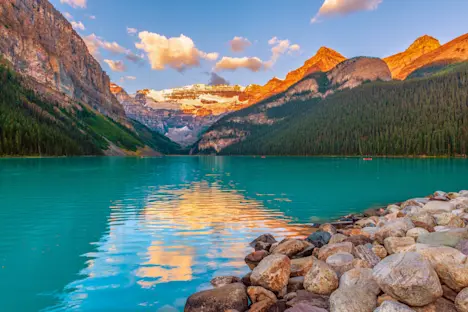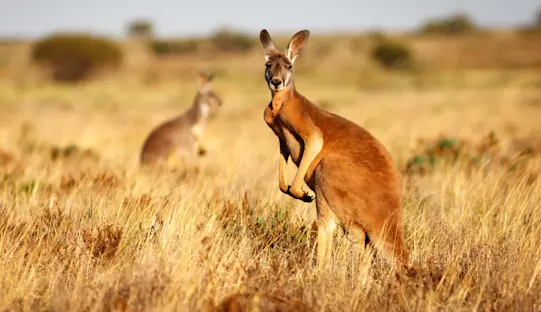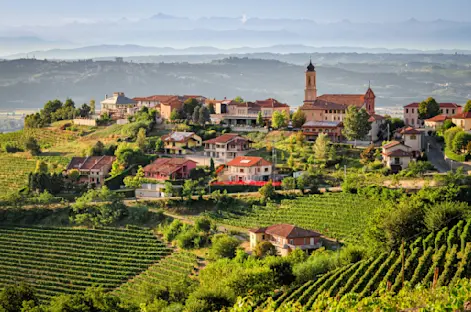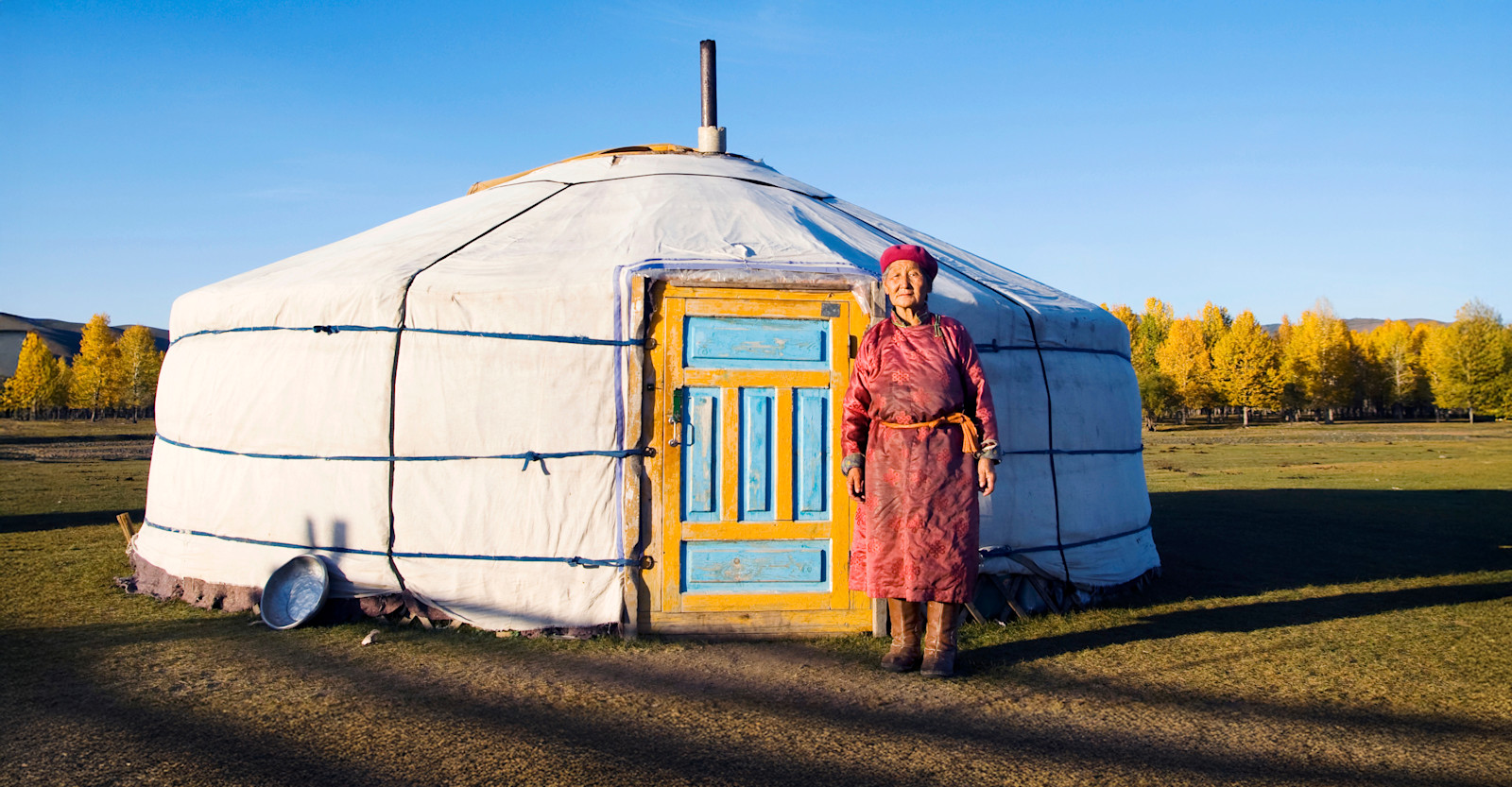For over 5,000 years, mobile herding families have shaped the land we now call Mongolia—reading sky and grass, moving seasonally with livestock and living in portable gers (yurts) designed for the wind, cold and heat they face on vast grasslands, high mountain ranges and the Gobi desert.
They are stewards of both culture and the environment, managing the “five jewels”—horses, sheep, goats, cattle/yaks and camels—that provide their sustenance, wealth and cultural identity. Their nomadic existence requires deep knowledge of natural cycles and pasture management and leaves them vulnerable to harsh climate events that can decimate herds and threaten family stability.
Today, Mongolia is roughly 2.5 times the size of Texas but has just over 3.5 million inhabitants. Over 99% of the country is uninhabited. Herding is central to culture and contributes 80% of its agricultural production and 11% of the country’s GDP.
Different cultures and groups practice these traditional ways, including Mongol families on the open steppe and Kazakh families in the high valleys of the Altai.
Nat Hab’s Untamed Mongolia itinerary connects these worlds, visiting Hustai National Park, Ikh Nart Nature Reserve and the West Altai in three small ger camps.
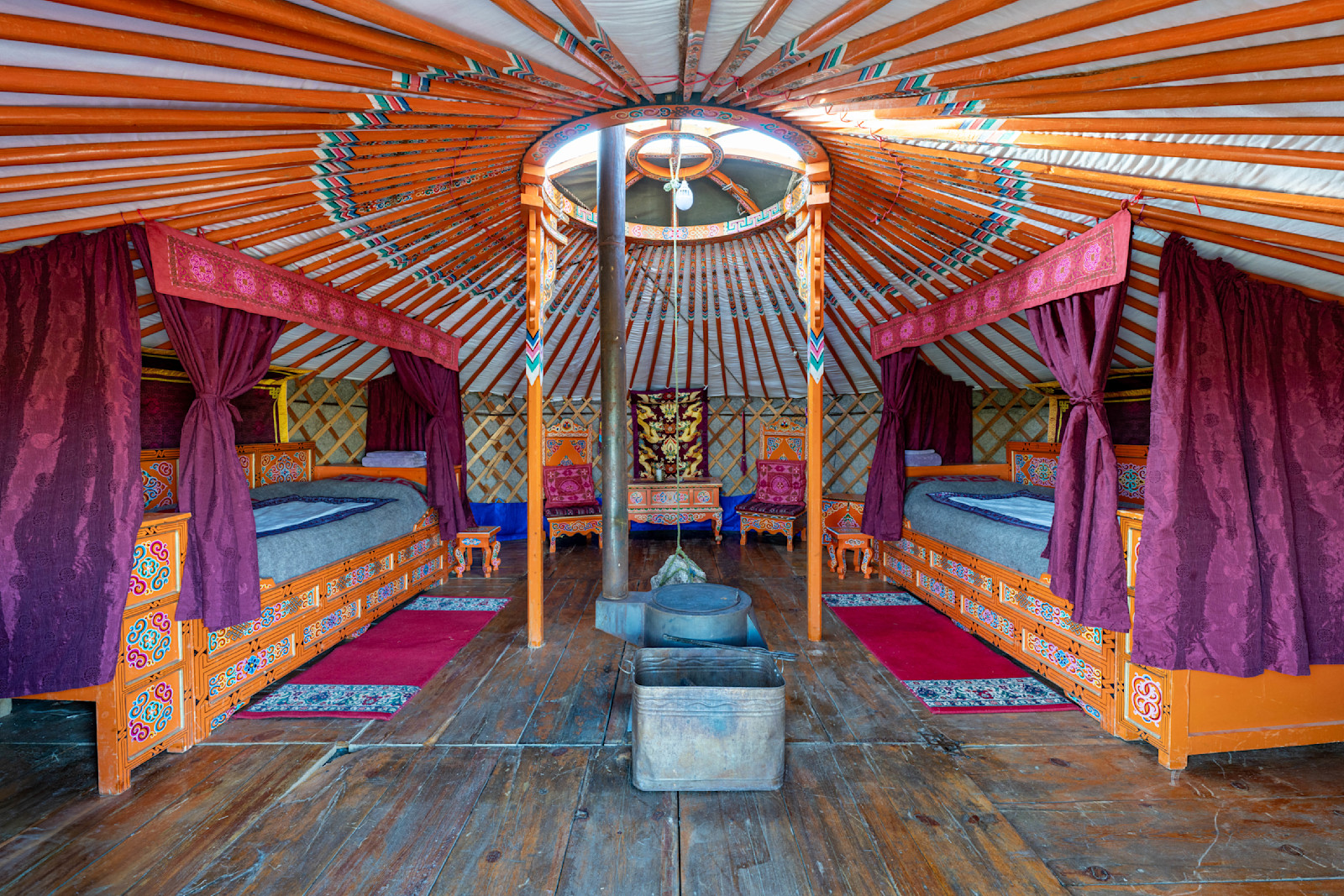
Ikh Nart Rocks Ger Camp, Ikh Nart Nature Reserve, Mongolia
Who are Mongolia’s herding cultures?
Herding families move seasonally across Mongolia’s 603,909 square miles with mixed herds: sheep, cashmere goats, horses and cattle/yaks, with Bactrian camels more common toward the Gobi.
In Mongolia’s far west, Kazakh families herd in the Altai–Sayan high country. Some households practice falconry with birds of prey, including golden eagles, recognized by UNESCO as living human heritage. It’s culturally important but not universal across Kazakh homes.
How do Mongolia’s Mongol and Kazakh herding cultures differ?
Groups that practice pastoral nomadism across Mongolia share many similarities, including:
- Seasonal mobility of ger camps—portable, durable, climate-resilient mobile dwellings
- Traditional ecological knowledge—reading weather and forage, water planning, and understanding wildlife interactions passed down through generations
Key differences between the cultures include:
- Landscape and movement: Mongol lifeways unfold on open steppe with moves keyed to pasture, water and wind; Kazakh lifeways play out among higher, colder valleys and rugged passes in the Altai
- Religion and language: Mongol steppe herders are primarily Buddhist or Shamanist with Mongolian as their main language, while Kazakh herders in Mongolia are predominantly Sunni Muslim and speak Kazakh, often alongside Mongolian
- Material culture: Both use gers, but interior layouts, textiles and motifs vary by region and ethnicity—for example, distinctive Kazakh embroidery and household arts
- Practices: Some Kazakh practitioners train golden eagles to pursue foxes and hares; steppe families emphasize mixed-herd management and deep horse culture on wide pasture
Daily details bring Mongolia’s herding cultures to life
Herders speak of the Five Snouts (tavan khoshuu mal): horses, sheep and goats, cattle or yaks, and camels that provide mobility, food, fiber and fuel.
Sheep and goats often run together; free-ranging stock are identified by ear marks or branding (tamaga). Virtually nothing is wasted: wool becomes ger felt, hides and sinew become tack and ropes, dried dung fuels the stove, horses camels and yaks carry people and freight.
In herding cultures, hospitality is a constant—there should be milk tea before questions—as are gentle animal-care rituals preserved in Mongolia’s intangible heritage, such as the UNESCO-recognized camel coaxing tradition in the Gobi.
Why do herding cultures matter to conservation?
Pastoral nomadism informs national identity through harmony with nature, hospitality and respect for animals as Mongolia urbanizes. Many families in Ulaanbaatar’s ger districts still live in traditional dwellings, a reminder that the portable home is both symbol and solution—though winter air quality can be a challenge.
Herding communities are key stewards of Mongolia’s steppe and semi-desert: mobility, low-waste husbandry and ecological knowledge help sustain rangelands for species like argali, ibex and cinereous vultures.
Check out WWF’s The Home and Life of Mongolian Nomadic Herders
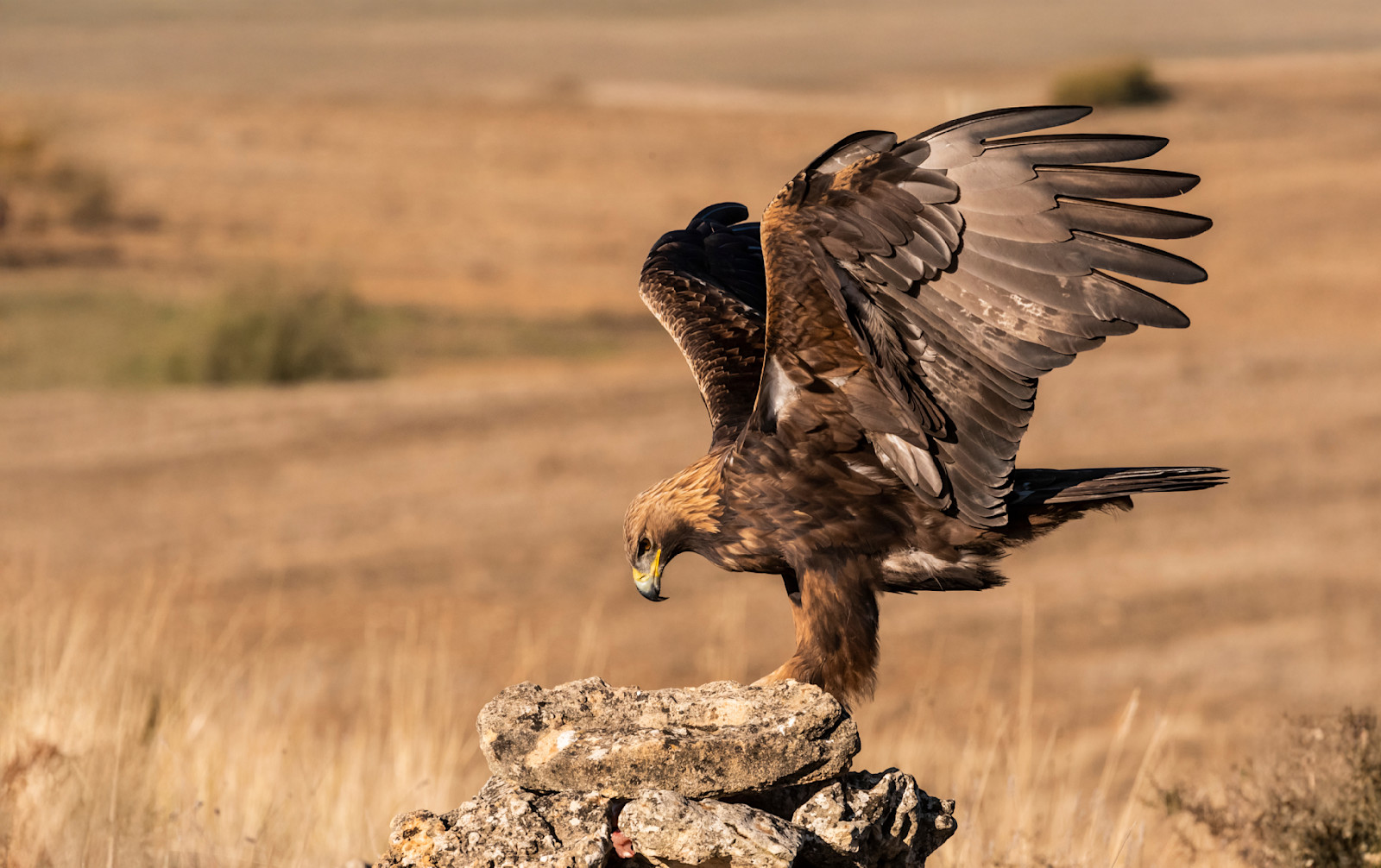
Golden eagle, Hustai National Park, Mongolia
What to expect in Hustai National Park
From our private mobile ger camp in the mountain steppe of Hustai’s buffer zone, we have special permitted access near the Core Zone and use researcher-only routes for wildlife drives. This is where takhi (Przewalski’s horses) thrive—on select spring departures you’ll track wolves with a senior park biologist at dawn.
Wildlife to spot in Hustai National Park:
- Takhi (Przewalski’s wild horse): The park is famous for its reintroduced population of this endangered species
- Red deer: A common sight within the park
- Mongolian gazelle: Large populations inhabit the grasslands
- Siberian marmot: Burrowing rodents that live in family groups
- Gray wolf: Elusive but present, sometimes tracked with park biologists
- Pallas’s cat (manul): An elusive, nocturnal feline rarely seen in daylight
Birdwatching in Hustai National Park:
- Golden eagle: A common resident raptor
- Lammergeier: An impressive bearded vulture
- Black stork: A striking wading bird
- Great bustard: A large ground-dwelling bird of the steppe
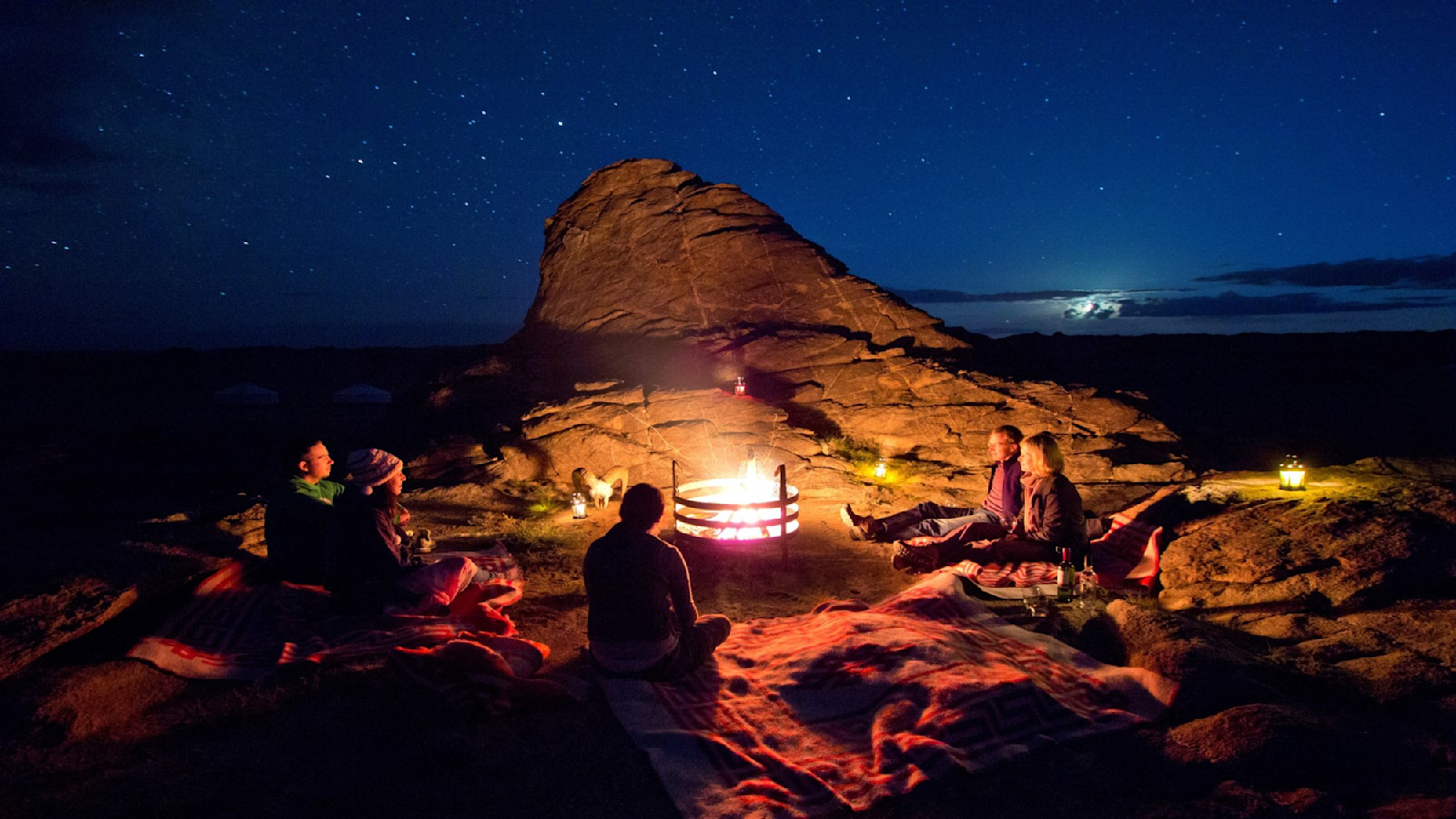
East Gobi, Mongolia
How to visit Ikh Nart Nature Reserve in the Eastern Gobi
A chartered Cessna cuts the long overland transfer, preserving time for wildlife, archaeology and conversations with seasonal herders among granite outcrops and dry washes. Guests stay in a permanent ger camp—look for argali, ibex and cinereous vultures.
Wildlife highlights at Ikh Nart:
- Argali sheep: The reserve harbors a globally important population
- Siberian ibex: Often resting on rugged rocky slopes
- Gazelles: Herds of Mongolian and goitered gazelles roam here
- Asiatic wild ass: A threatened equid found in the reserve
- Cinereous vulture: A globally important species nesting on cliffs
- Saker falcon: A conservation priority in Mongolia
- Raptors: Eagles, buzzards and other raptors frequent the reserve
- Migratory birds: Ikh Nart serves as a key stopover on flyways
West Altai (high country)
In Mongolia’s far west, culture is equally vivid. The region remains the stronghold of Kazakh language and traditions, with more than 120,000 Kazakhs living in Mongolia. Some are herders, others craftspeople, teachers and shopkeepers. Meeting families—rather than focusing only on eagle-hunter demonstrations—ensures that tourism benefits are shared more authentically.
Near Tsambagarav National Park, small luxury gers anchor visits with Kazakh families, adding context for high-country herding, music and embroidery, and—where appropriate—falconry heritage beneath alpine valleys and snow-tipped summits.
Mammals of the West Altai:
- Altai argali: The world’s largest mountain sheep, adapted to high altitude
- Snow leopard: An elusive, endangered predator of the Altai
- Siberian ibex: A key prey species, often seen on cliffs and in ancient rock art
- Brown bear: Solitary foragers in alpine meadows and forests
- Red deer: Critically endangered in the Altai, surviving in scattered herds
- Marmots and ground squirrels: Common in alpine areas, with alpine marmots notable residents
Birdwatching in the West Altai:
- Golden eagle: Revered hunter and cultural symbol
- Other raptors: The reserve hosts black storks, peregrine falcons and eagle owls
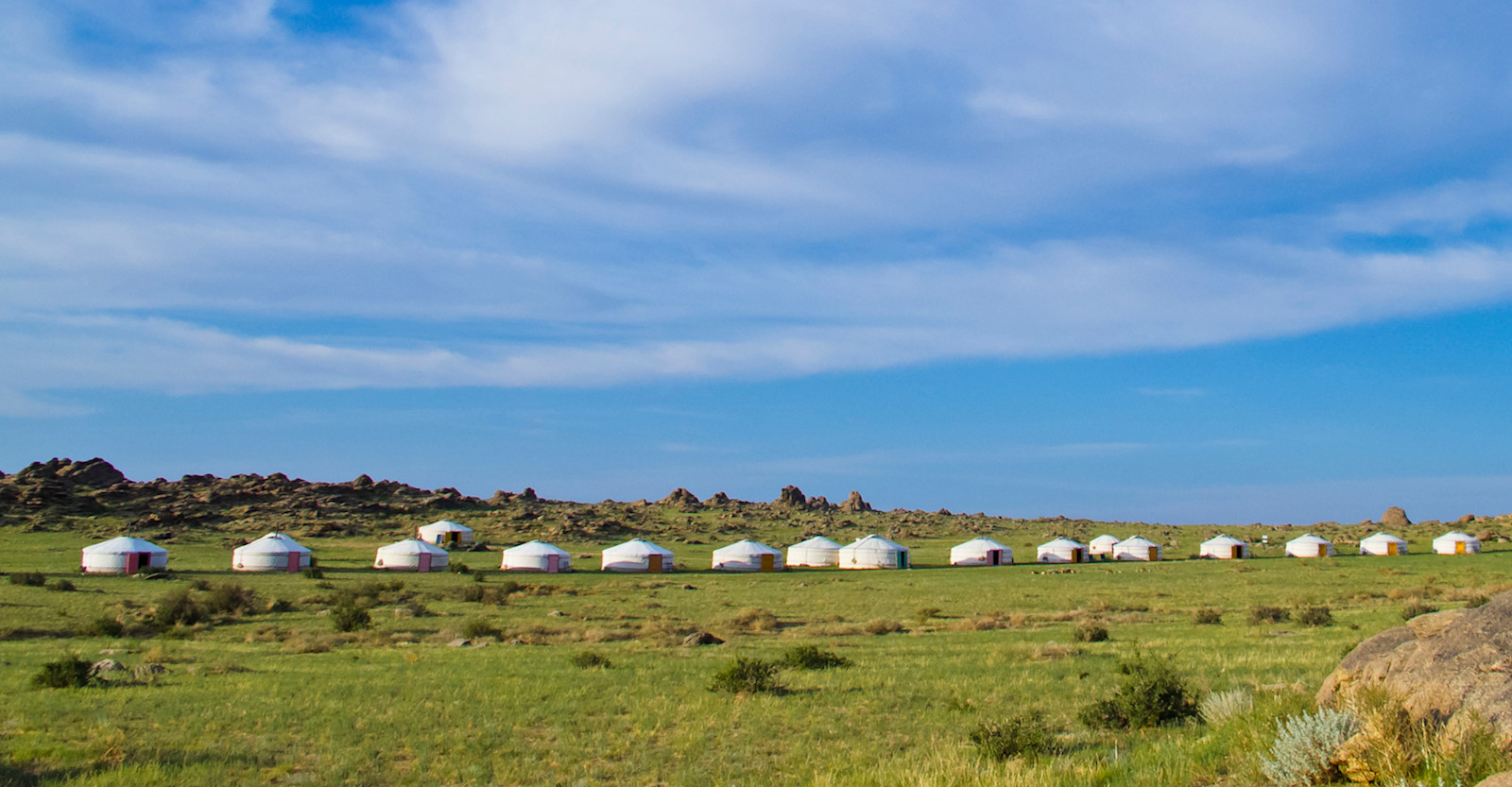
Private Hustai mobile ger camp, Hustai National Park, Mongolia.
To meet Mongolia’s Kazakh Altai and Mongol steppe herding cultures in one trip
Consider our Untamed Mongolia adventure. You’ll explore Hustai (mountain steppe), Ikh Nart (Eastern Gobi) and the West Altai (high country) with:
- Private flights—including a charter to and from Ikh Nart—replace long drives, maximizing time with wildlife and families
- Exclusive Hustai access: a private mobile ger camp near the Core Zone and wildlife drives on researcher-only routes
- Three distinct ger stays: private mobile (Hustai), permanent (Ikh Nart), small luxury (West Altai)
- Select May–June departures include wolf tracking with a senior park biologist






